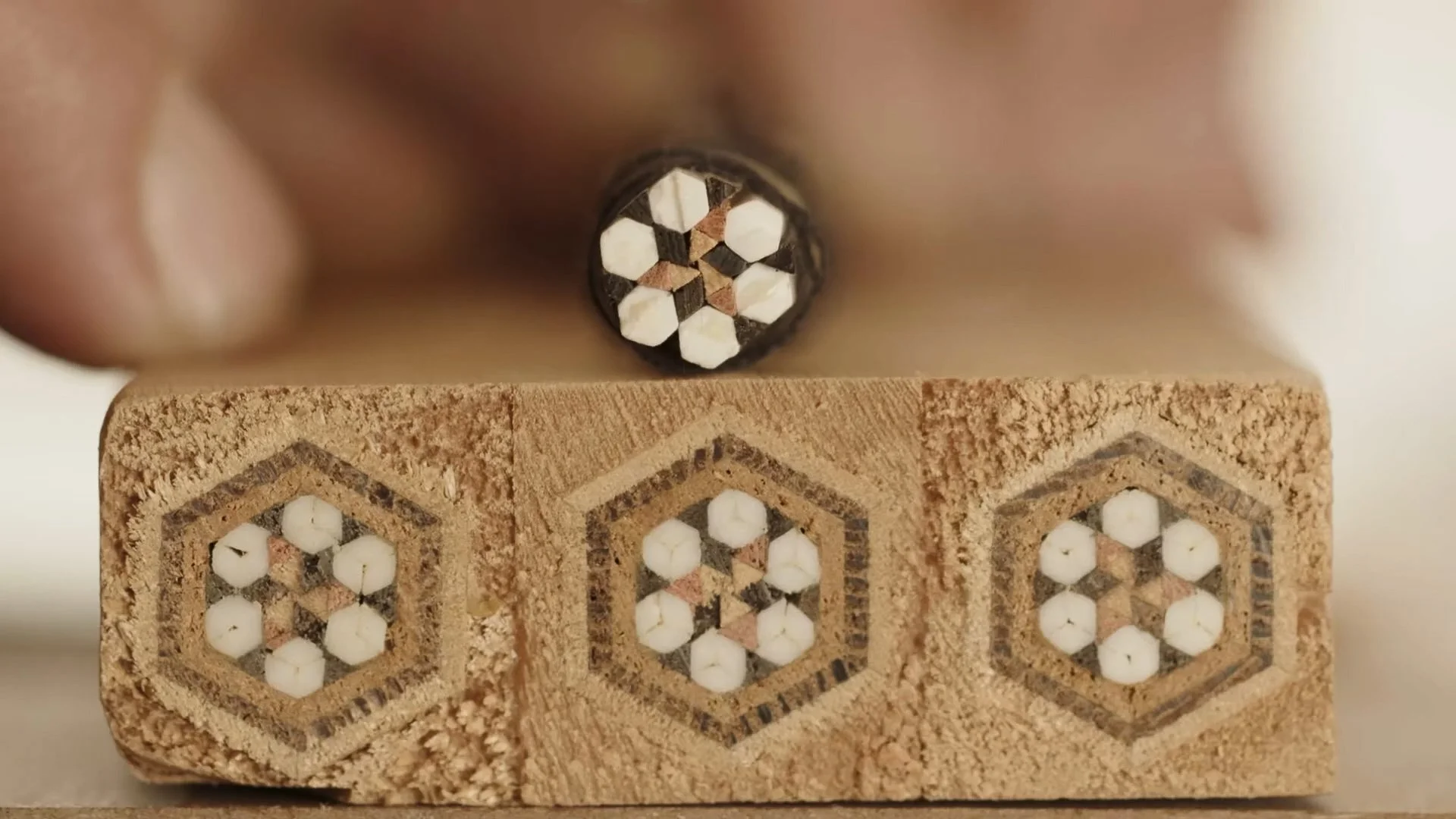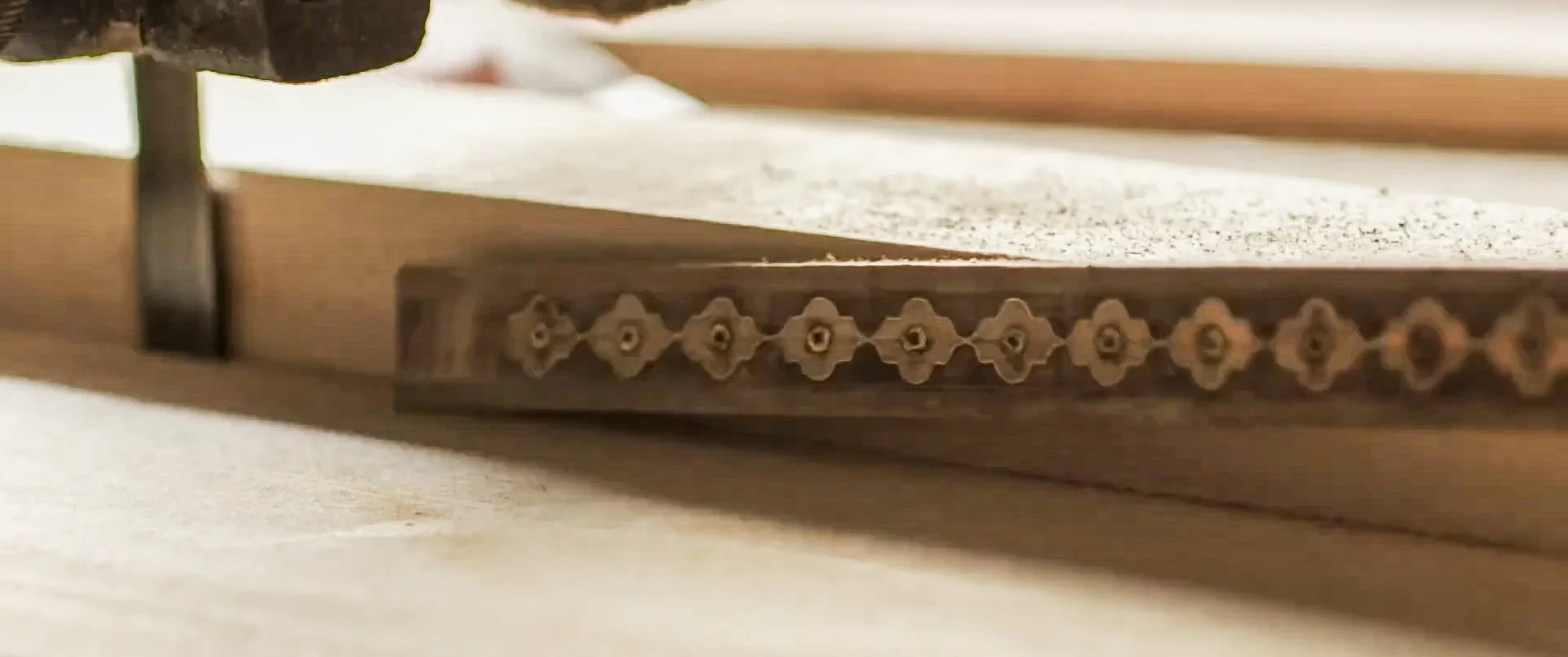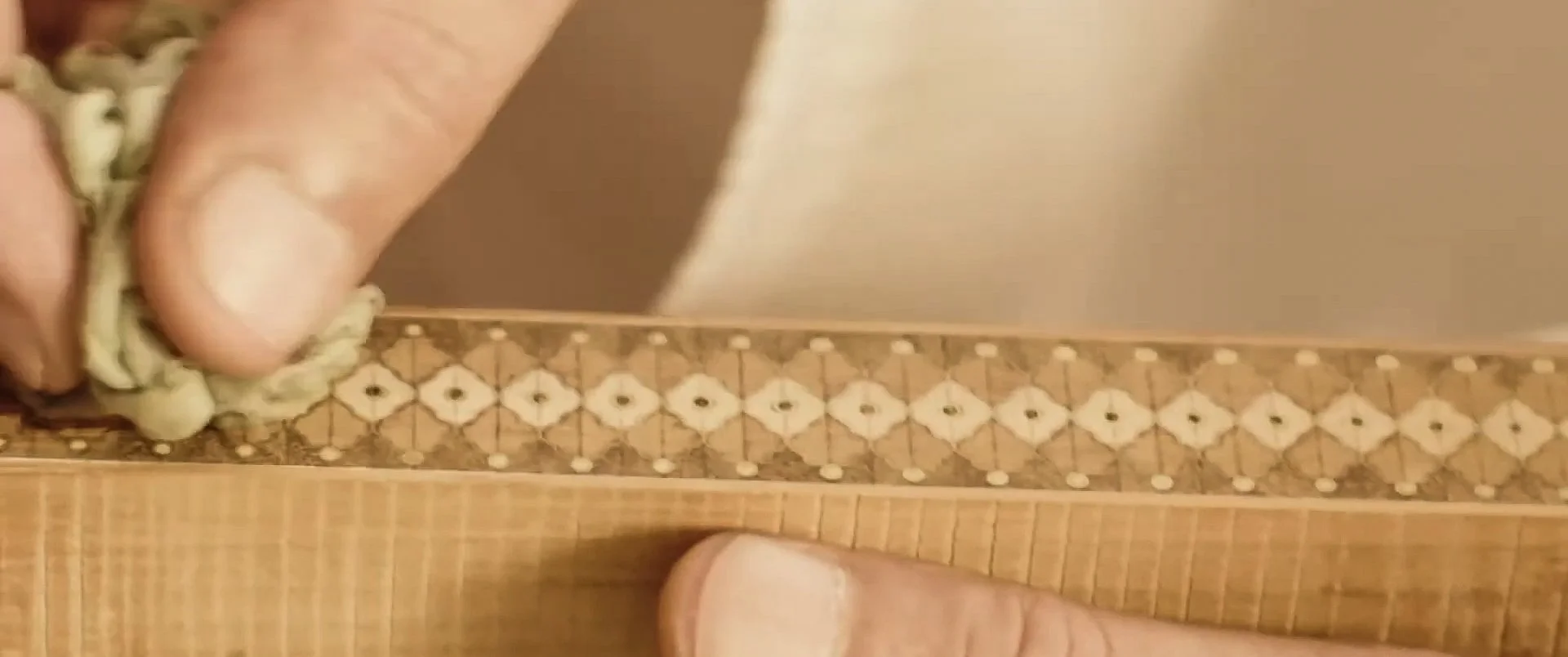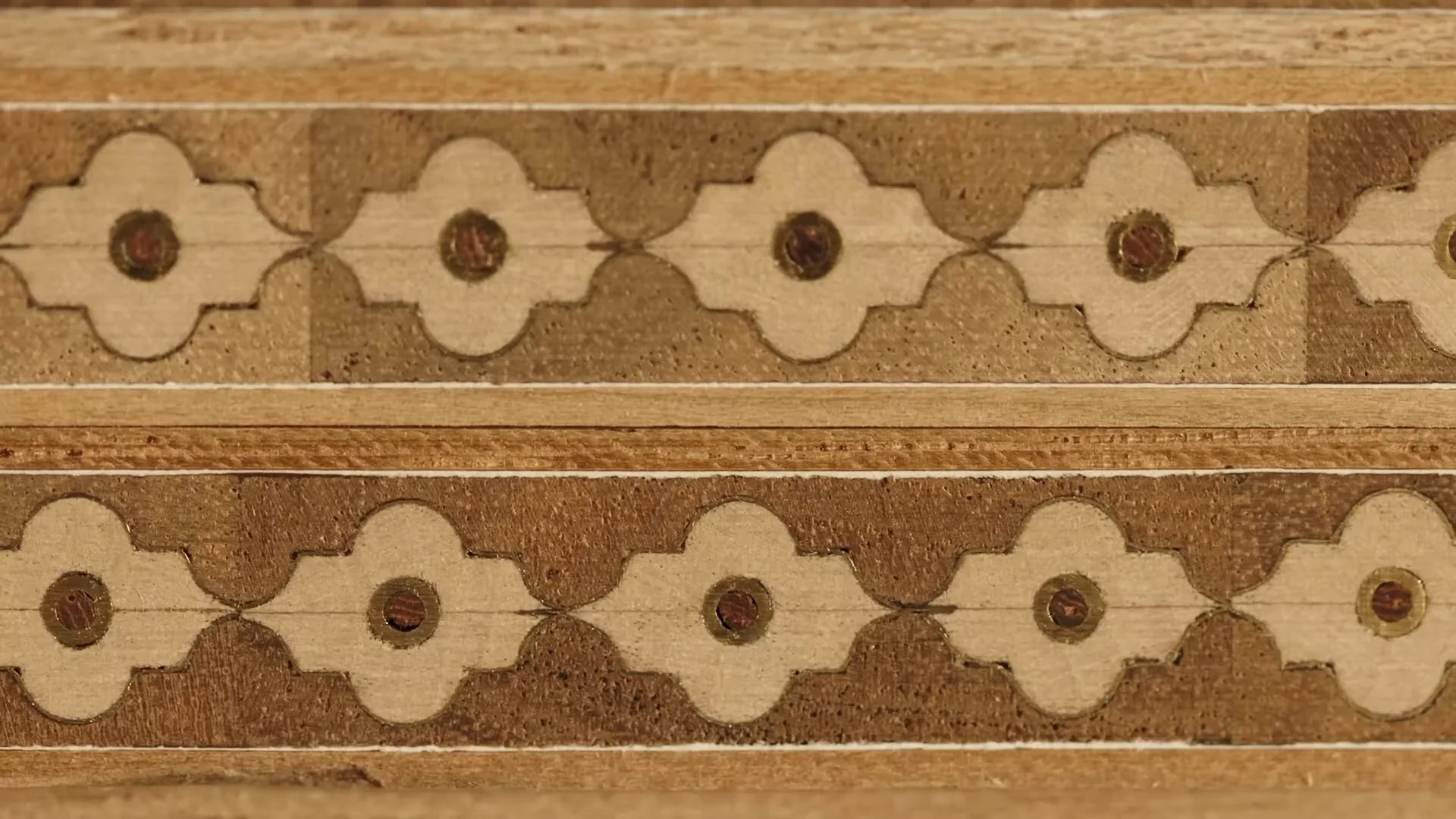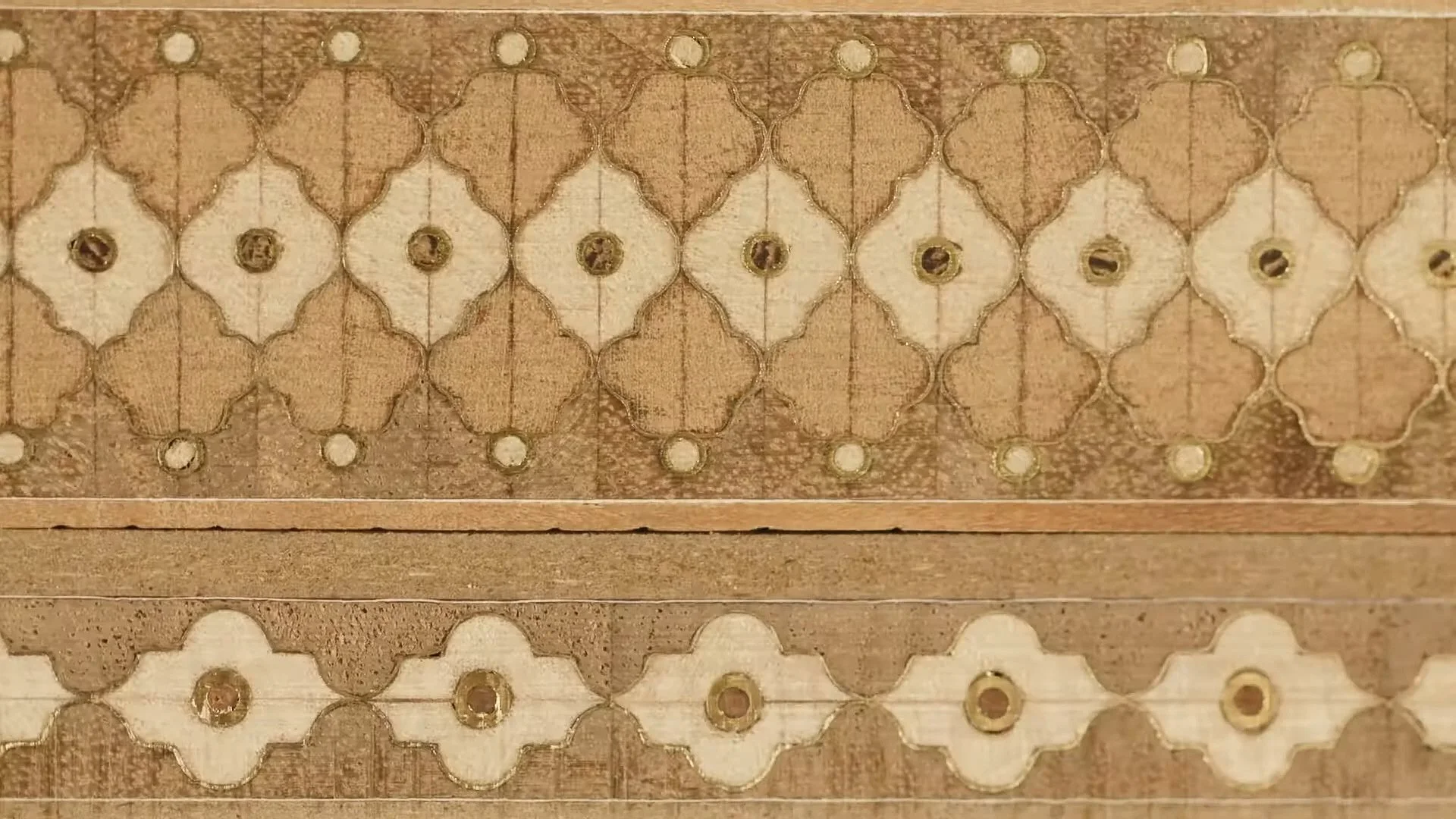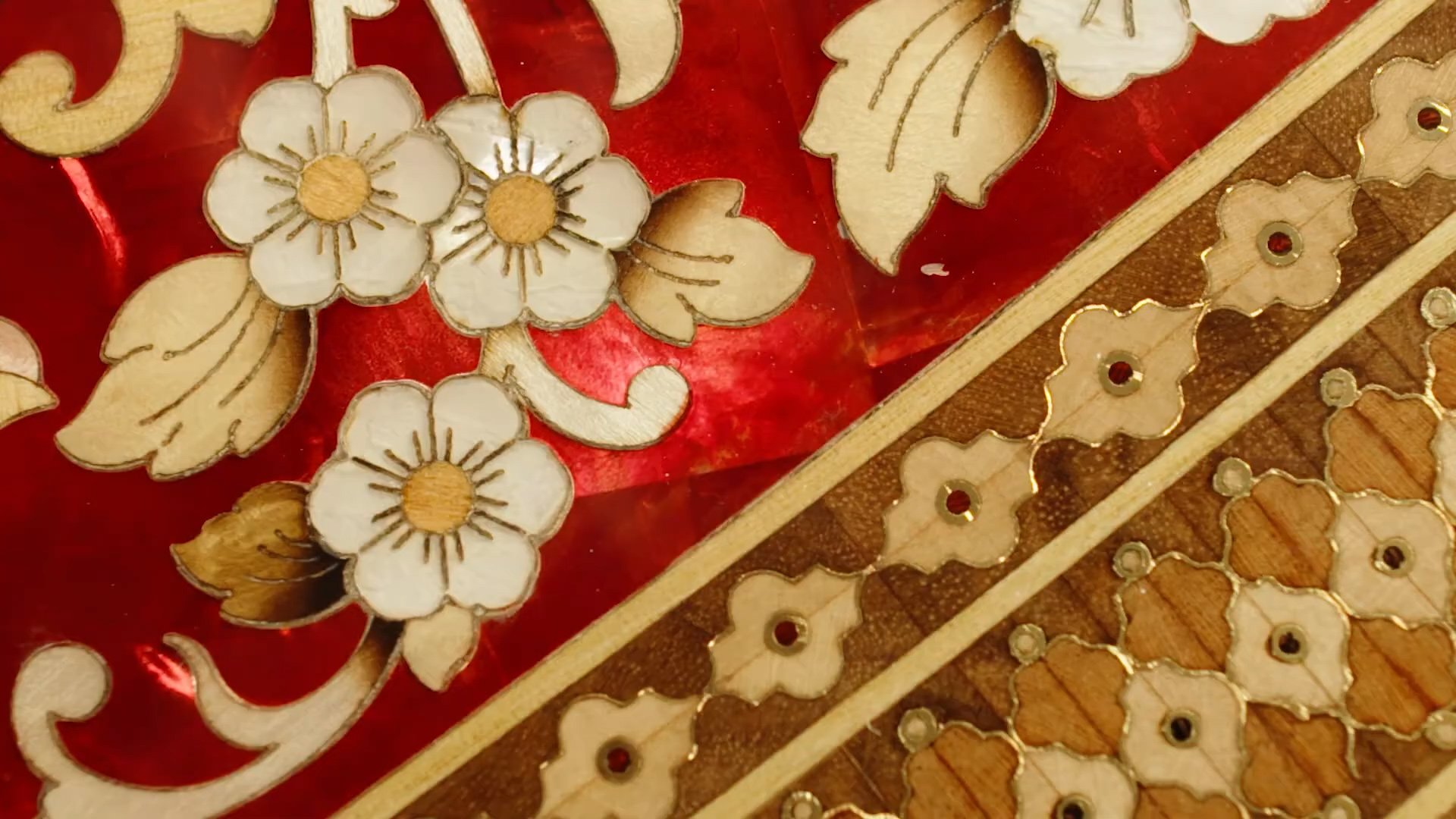
Khatam
Intricate geometric patterns offer a glimpse into the world of Islamic art
Khatam
Khatam is a type of Persian marquetry crafted from wooden, bone and metal pieces. Khatam County is the capital of Khatam, located in Iran. Crafting Khatam is known as 'Khatam kari' (Persian: خاتمکاری). Common materials used are gold, silver, brass, aluminium and twisted wire. Artworks using smaller inlaid pieces are typically given higher value.
Khatam Kari
The steps of making Khatam involve providing different types and colors of wood, cutting them into 30 cm lengths and 1-5.2 mm diameters, preparing triangles from the pieces, filing the sides according to the plan, and preparing metal wires for finishing the design. The head-artisian starts the Khatam process by drawing figures which will eventually form the Khatam. They are then placed beside each other using either wooden or metal triangles and secured with strings, forming paddles. After a few hours these strings are smoothed over and four paddles are joined together into something known as a "toglo". This is followed by a step known as "flower-forming", where further structures are built. Six wires are placed around each corner in a circular pattern, forming a shamse. This structure is then tightened with strings, creating a star-like design that is repeated until the desired result is achieved. Finally, after several layers of thin materials are cut and bonded together, the Khatam is completed with a total of 400 steps. Khaatam is an ornamental craft technique which involves attaching planks or segments in different plans, colors, shapes and sizes. A repair, filing, brushing, undercutting and grinding process is performed to create the desired form including a possible oiling or polishing of the surface with sealer and polisher. The quality of a Khatam is determined by the accuracy and consistency of the design, which are reflected in the craftsmanship of the head artisian.
Woodcarving is currently being practiced mainly Isfahan, Shiraz, and Tehran. This delicate art has seen great innovation by preserving its noble qualities. Special attention is given to the design aspect of this skill, wherein magnificent patterns are etched into wood, ivory or bone with simple or more distinguished shapes.
Mohammad Bagher Hakim-Elahi was a master of the art of Khatam. He learned from Master Sanee-Khatam in his youth in Shiraz, Iran and taught his youngest brother, Asad-ol-lah Hakim-Elahi. In the early 1950s, Mr. Hakim-Elahi moved to Tehran where he stayed until his death in March 2012. He crafted numerous Khatan works, from small frames and jewelry boxes to larger pieces like coffee tables and chandeliers. His works are now in a variety of locations around the world such as museums in Iran and private collections.
Wood carving is a popular art form seen around Iran, especially on mosques, palaces and ancient buildings. Images of rose leaves, birds and animals are commonly depicted, as well as latticework which is handmade. Iran is renowned for its old lattice doors and windows. Another type of art is sudorific woodwork - which involves intricate designs carved out of various colors of natural wood. This produces an even surface with interesting images that can include trees, flowers and animals. The Cultural Heritage Organization of Iran funds workshops to preserve this craftsmanship, while it continues to be passed down within private workshops.
For more information and to discuss your project, please do get in touch.


